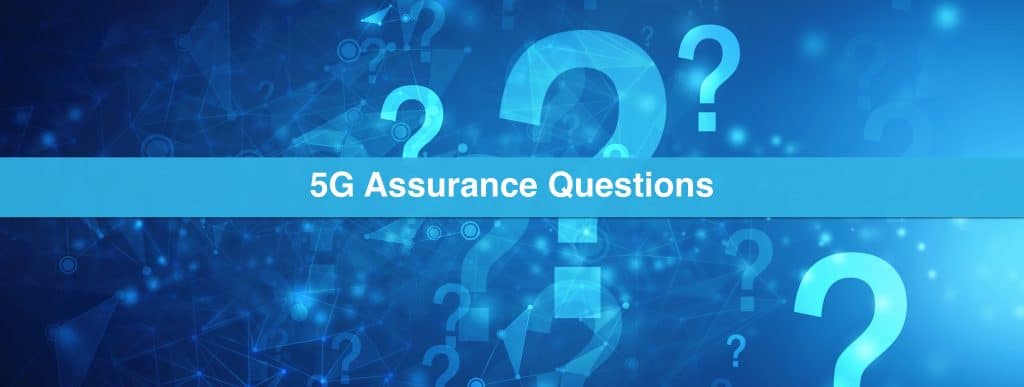In order to deliver many of the complex cases that 5G promises, operators are deploying a new 5G network architecture, which includes a new cloud-native 5G Core (5GC) and new Radio Access Network (RAN) known as 5G NR. With many of the network issues stemming from the radio, operators will need to monitor the entire network from the RAN to the Network Core if they want to know the true nature of an issue.
In the second part of RADCOM’s Ask the Expert series, we will be focusing on the RAN monitoring and its role in 5G.
1. How does the trend towards O-RAN affect service assurance, and how can it complement end-to-end monitoring?
O-RAN or Open RAN is an interface between Radio Power transmitter named O-RU, the O-DU (Open-Distributed Unit), and O-CU (Open Centralized Unit). This decoupling enables interoperable architecture, meaning operators are freed from the vendor lock-ins, hoping to help speed up 5G network development and rollouts. Despite its infancy, the first deployments have started among Tier-1 operators such as AT&T, Telefonica, Rakuten, and Vodafone. As part of the O-RAN Alliance, they and other major industry players have defined two critical principals for the O-RAN. The first is its open interface, which will allow some of the smaller vendors to gain a market share. The open interface will enable operators to pick and choose elements from various vendors making their RAN customizable. This will both allow competition and a reduction in costs. The second principle is intelligence, meaning the integration of smart advanced technologies such as AI, machine learning and automation. The deployment of 5G means significantly increased traffic and data levels that make it no longer viable for humans to operate. Therefore, as much of the network as possible needs to be open and intelligent for operators to ensure swift root cause analysis and excellent service experience.
The O-DU and the O-CU are software components, which are containerized in a virtual environment. Most often deployed in the MEC Mobility Edge Computing (MEC) pods are close to the Radio Transmitter units. Software components are much easier to control, enabling the Radio Protocol Layer to be streamed out, allowing service assurance providers to access this stream of data quickly.

An operator needs the data from the RAN as well as the Core to be able to draw concrete conclusions on the root cause of an issue. The RAN data which includes core metrics such as Packet Jitter, Packet Loss, Timeouts, Throughput, and Connection Release Cause can be collected and measured. As part of an end-to-end monitoring solution these metrics, combined with data from the Core help to deliver complete network visibility. Operators wanting to measure their 5G customer experience can do so by deploying an end-to-end monitoring solution, delivering full network visibility, which, thanks to O-RAN, is becoming easier to do.
The service assurance containers monitor both the RAN and the Core functions and smartly collect, process, and correlate the data. Adding AI and ML capabilities will further improve the end-to-end network visibility by understanding the encrypted traffic. Combined, they deliver the necessary insights to the operator for targeted optimization, drill-downs, and root-cause analysis.
By including RAN monitoring as part of an end-to-end monitoring solution, the operator can gain complete network visibility and genuinely understand the root-cause of an issue and the correct actions required to resolve it.
2. What is the role of assurance in monitoring the RAN to deliver low latency for 5G?
Low latency is a critical requirement for many of the use cases promised by 5G. Multi-player internet games and video streaming require reliable low latency and consistent throughput. More advanced use cases like driverless vehicles need Ultra-Reliable Low Latency Communication (URLLC) to communicate with other vehicles on the road and react in real-time.
In order to deliver the ultra-low latency, a new architecture for the 5G NR and 5GC were developed. As defined by 3GPP, this is required to be cloud-native and built with a Service-Based Architecture. This means supporting both Service-Based Infrastructure (SBI) and non-SBI interfaces, as well as Control and User Plane Separation (CUPS). By separating the Control Plane from the Server Plane, the user data can be placed at the edge of the network, shortening the distance between the User Equipment and the Core. It is this distance which is one of the key enablers to delivering low latency.
The Radio power transmitter is not exempt from virtualization and new architecture. The digital unit acting as the hardware baseband unit will be virtual, named “vRAN.” Until recently, this was located close to the radio power transmitter on the mast, or below, but with virtualization moves to the network edge and functions on generic servers at a central location. This decoupling of RAN functions from proprietary hardware enables operators to manage their network more efficiently, scaling network resources dynamically, which will be essential for deploying high bandwidth-on-demand 5G services.

However, without a fully cloud-native service assurance solution monitoring the entire network from the MEC (Multi-access Edge Computing) to the Core, operators will have no idea if they are delivering the low latency their customers are not just expecting but requiring. Radio-related issues have a critical impact on the customer experience. If operators are not monitoring the RAN, they may be blind to subpar performance areas, such as not maintaining consistently low latency and high throughput, which will be critical to delivering use cases in 5G.
The service assurance solution is there to deliver the end-to-end network visibility through its containers monitoring both the RAN and the Core functions. An operator needs the RAN data to draw a concrete conclusion on the root cause of an issue; without this data, they are ignoring a significant part of their network architecture and not receiving an end-to-end view of the network performance. Operators wanting to measure the 5G customer experience will have to take the Core data and combine it with RAN advanced tools, AI, and machine learning. Using all of this information together, an advanced service assurance platform can collect, process, and correlate the data delivering real-time insights, which will be crucial to assuring low latency.
Expert conclusions
As network issues occur across the entire network, it leads us to the conclusion that operators must adopt an end-to-end solution which collects data from both the RAN and the Core. Only an end-to-end solution delivers the full network visibility which has, and always will be, essential to operators. Suppose operators genuinely want to deliver a superior customer experience. In that case, they must deploy a fully cloud-native, containerized service assurance solution that can collect smartly, process, and correlate data delivering the necessary insights for the highest level QoE.
If you have a 5G assurance question you would like our experts to answer please submit it here
This blog post may contain forward-looking statements within the meaning of the Private Securities Litigation Reform Act of 1995. To read more about forward-looking statements, please click here.


